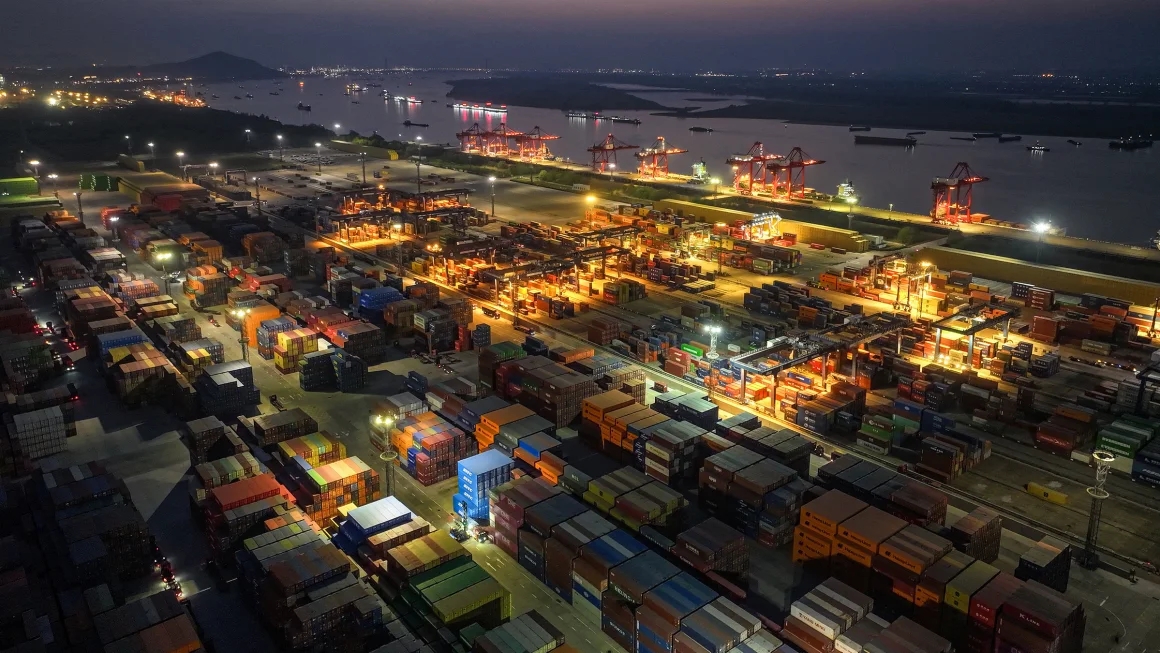Gambiaj.com – (Washington, DC) – The United States has imposed an unprecedented 104% tariff on Chinese goods, marking a dramatic escalation in President Donald Trump’s ongoing trade war with Beijing. The move, which took effect on Wednesday, follows successive tariff hikes, including a 50% increase announced last week after China responded with its own 34% levy on US imports.
The latest round of tariffs has pushed the cumulative trade duties against China to approximately 120%, factoring in those previously imposed under Trump’s first administration and maintained by President Joe Biden. This level of economic confrontation between the world’s two largest economies is unparalleled and has sent shockwaves through global markets.
China’s Defiant Response
In a swift reaction, Beijing denounced the US tariffs as coercive and pledged to take countermeasures. A spokesperson for China’s Commerce Ministry warned that if Washington proceeds with its escalated restrictions, Beijing “will fight to the end.” The Chinese Foreign Ministry also issued a strong rebuke, stating that China “firmly opposes” what it described as the US’s “domineering and bullying behavior.”
Despite the rising tensions, Beijing has yet to announce immediate retaliatory tariffs. However, a newly released Chinese white paper on US-China trade relations described the tariffs as “unilateral and protectionist,” signaling that China is prepared for long-term confrontation while keeping the door open for negotiations.
Southeast Asia Caught in the Crossfire
The economic fallout from Trump’s tariff war extends beyond China, with Southeast Asian nations also facing heavy trade restrictions. Countries such as Malaysia (24%), Vietnam (46%), Cambodia (49%), Indonesia (32%), and Thailand (37%) have been hit with steep tariffs, raising concerns over economic instability in the region.
These tariffs, analysts say, are part of a broader US strategy that goes beyond trade imbalances. Since Trump’s initial tariff hikes during his first administration, many multinational companies sought to circumvent US-China tensions by shifting production to other Southeast Asian nations under a strategy known as “China Plus One.” However, Trump’s new measures appear aimed at closing this loophole while pressuring these countries to align with Washington’s geopolitical stance against Beijing.
Economic and Market Turmoil
The latest trade war escalation has had immediate financial consequences. Wall Street experienced its fourth-largest decline in post-war history last Thursday and Friday, wiping trillions off market capitalization. The sell-off continued this week, with the S&P 500 dropping 1.6% and the NASDAQ falling by 2%.
The tariffs have also triggered infighting within Trump’s inner circle. Billionaire Elon Musk lashed out at senior trade adviser Peter Navarro, calling him a “moron” and “dumber than a sack of bricks” after Navarro dismissed Musk’s concerns over the tariffs, arguing that the billionaire was merely protecting his business interests. The spat underscores divisions within the US financial elite, with some fearing that Trump’s policies could undermine the US economy and the global dominance of the dollar.
Trade War or Negotiation?
While the immediate impact of the tariffs has been economic disruption and rising tensions, both Washington and Beijing have signaled that they remain open to negotiations—though with conditions. The US has indicated that any potential tariff reduction would require countries to “align with the United States in economic and national security matters,” an implicit demand for geopolitical loyalty in its standoff with China.
For now, China has promised “resolute countermeasures,” warning that it will not accept economic coercion. As the trade war intensifies, businesses, consumers, and global markets face an uncertain future, with the possibility of further economic shocks looming large.










